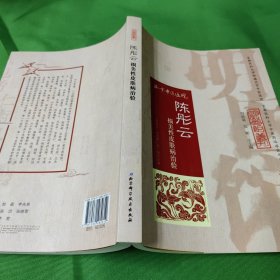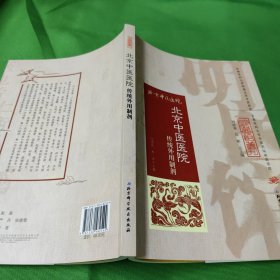
数学与现代科学技术丛书6:多尺度模型的基本原理(英文版)
¥ 120 九五品
仅1件
北京朝阳
认证卖家担保交易快速发货售后保障
作者Weinan E 著
出版社科学出版社
出版时间2012-02
版次1
装帧精装
货号B24
上书时间2021-03-04
- 在售商品 暂无
- 平均发货时间 16小时
- 好评率 暂无
- 最新上架
商品详情
- 品相描述:九五品
图书标准信息
- 作者 Weinan E 著
- 出版社 科学出版社
- 出版时间 2012-02
- 版次 1
- ISBN 9787030334855
- 定价 98.00元
- 装帧 精装
- 开本 32开
- 纸张 胶版纸
- 页数 397页
- 正文语种 英语
- 【内容简介】
- 《数学与现代科学技术丛书6:多尺度模型的基本原理(英文版)》系统介绍有关多尺度建模的基本问题,主要介绍其基本原理而非具体应用。前四章介绍有关多尺度建模的一些背景材料,包括基本的物理模型,例如,连续统力学、量子力学,还包括一些多尺度问题中常用的分析工具,例如,平均方法、齐次化方法、重正规化群法、匹配渐近法等,同时,还介绍了运用多尺度思想的经典数值方法。接下来介绍一些更前沿的内容:多物理模型的实例,即明确使用多物理渐近的分析模型,当宏观经验模型不足时,借助微观模型,使用数值方法来获取复杂系统的宏观行为规律,使用数值方法将宏观模型和微观模型结合起来,以便更好地解决局部奇点、亏量及其他问题;最后一部分主要介绍三类具体问题:带多尺度系数的微分方程、慢动力和快动力问题以及其他特殊问题。
- 【目录】
-
《数学与现代科学技术丛书》序
Preface
Chapter1Introduction
1.1Examplesofmultiscaleproblems
1.1.1Multiscaledataandtheirrepresentation
1.1.2Differentialequationswithmultiscaledata
1.1.3Differentialequationswithsmallparameters
1.2Multi-physicsproblems
1.2.1Examplesofscale-dependentphenomena
1.2.2Deficienciesofthetraditionalapproachestomodeling
1.2.3Themulti-physicsmodelinghierarchy
1.3Analyticalmethods
1.4Numericalmethods
1.4.1Linearscalingalgorithms
1.4.2Sublinearscalingalgorithms
1.4.3TypeAandtypeBmultiscaleproblems
1.4.4Concurrentvs.sequentialcoupling
1.5Whatarethemainchallenges?
1.6Notes
Bibliography
Chapter2AnalyticalMethods
2.1Matchedasymptotics
2.1.1Asimpleadvection-diffusionequation
2.1.2Boundarylayersinincompressibleflows
2.1.3Structureanddynamicsofshocks
2.1.4TransitionlayersintheAllen-Cahnequation
2.2TheWKBmethod
2.3Averagingmethods
2.3.1Oscillatoryproblems
2.3.2Stochasticordinarydifferentialequations
2.3.3Stochasticsimulationalgorithms
2.4Multiscaleexpansions
2.4.1Removingsecularterms
2.4.2Homogenizationofellipticequations
2.4.3HomogenizationoftheHamilton-Jacobiequations
2.4.4Flowinporousmedia
2.5Scalingandself-similarsolutions
2.5.1Dimensionalanalysis
2.5.2Self-similarsolutionsofPDEs
2.6Renormalizationgroupanalysis
2.6.1TheIsingmodelandcriticalexponents
2.6.2Anillustrationoftherenormalizationtransformation
2.6.3RGanalysisofthetwo-dimensionalIsingmodel
2.6.4APDEexample
2.7TheMori-Zwanzigformalism
2.8Notes
Bibliography
Chapter3ClassicalMultiscaleAlgorithms
3.1Multigridmethod
3.2Fastsummationmethods
3.2.1Lowrankkernels
3.2.2Hierarchicalalgorithms
3.2.3Thefastmulti-polemethod
3.3Adaptivemeshrefinement
3.3.1Aposteriorierrorestimatesandlocalerrorindicators
3.3.2Themovingmeshmethod
3.4Domaindecompositionmethods
3.4.1Non-overlappingdomaindecompositionmethods
3.4.2Overlappingdomaindecompositionmethods
3.5Multiscalerepresentation
3.5.1Hierarchicalbases
3.5.2Multi-resolutionanalysisandwaveletbases
3.6Notes
Bibliography
Chapter4TheHierarchyofPhysicalModels
4.1Continuummechanics
4.1.1Stressandstraininsolids
4.1.2Variationalprinciplesinelasticitytheory
4.1.3Conservationlaws
4.1.4Dynamictheoryofsolidsandthermoelasticity
4.1.5Dynamicsoffluids
4.2Moleculardynamics
4.2.1Empiricalpotentials
4.2.2Equilibriumstatesandensembles
4.2.3Theelasticcontinuumlimit剟theCauchy-Bornrule
4.2.4Non-equilibriumtheory
4.2.5LinearresponsetheoryandtheGreen-Kuboformula
4.3Kinetictheory
4.3.1TheBBGKYhierarchy
4.3.2TheBoltzmannequation
4.3.3Theequilibriumstates
4.3.4Macroscopicconservationlaws
4.3.5Thehydrodynamicregime
4.3.6Otherkineticmodels
4.4Electronicstructuremodels
4.4.1Thequantummany-bodyproblem
4.4.2HartreeandHartree-Fockapproximation
4.4.3Densityfunctionaltheory
4.4.4Tight-bindingmodels
4.5Notes
Bibliography
Chapter5ExamplesofMulti-physicsModels
5.1Browniandynamicsmodelsofpolymerfluids
5.2ExtensionsoftheCauchy-Bornrule
5.2.1Highorder,exponentialandlocalCauchy-Bornrules
5.2.2Anexampleofaone-dimensionalchain
5.2.3Sheetsandnanotubes
5.3Themovingcontactlineproblem
5.3.1Classicalcontinuumtheory
5.3.2Improvedcontinuummodels
5.3.3Measuringtheboundaryconditionsusingmoleculardynamics
5.4Notes
Bibliography
Chapter6CapturingtheMacroscaleBehavior
6.1Someclassicalexamples
6.1.1TheCar-Parrinellomoleculardynamics
6.1.2Thequasi-continuummethod
6.1.3Thekineticscheme
6.1.4Cloud-resolvingconvectionparametrization
6.2Multi-gridandtheequation-freeapproach
6.2.1Extendedmulti-gridmethod
6.2.2Theequation-freeapproach
6.3Theheterogeneousmultiscalemethod
6.3.1ThemaincomponentsofHMM
6.3.2Simulatinggasdynamicsusingmoleculardynamics
6.3.3TheclassicalexamplesfromtheHMMviewpoint
6.3.4Modifyingtraditionalalgorithmstohandlemultiscaleproblems
6.4Somegeneralremarks
6.4.1Similaritiesanddifferences
6.4.2Diffcultieswiththethreeapproaches
6.5Seamlesscoupling
6.6Applicationtofluids
6.7Stability,accuracyandeffciency
6.7.1Theheterogeneousmultiscalemethod
6.7.2Theboostingalgorithm
6.7.3Theequation-freeapproach
6.8Notes
Bibliography
Chapter7ResolvingLocalEventsorSingularities
7.1Domaindecompositionmethod
7.1.1Energy-basedformulation
7.1.2Dynamicatomisticandcontinuummethodsforsolids
7.1.3Coupledatomisticandcontinuummethodsforfluids
7.2Adaptivemodelrefinementormodelreduction
7.2.1Thenonlocalquasicontinuummethod
7.2.2Coupledgasdynamic-kineticmodels
7.3Theheterogeneousmultiscalemethod
7.4Stabilityissues
7.5ConsistencyissuesillustratedusingQC
7.5.1Theappearanceoftheghostforce
7.5.2Removingtheghostforce
7.5.3Truncationerroranalysis
7.6Notes
Bibliography
Chapter8EllipticEquationswithMultiscaleCoeffcients
8.1Multiscalefiniteelementmethods
8.1.1Thegeneralizedfiniteelementmethod
8.1.2Residual-freebubbles
8.1.3Variationalmultiscalemethods
8.1.4Multiscalebasisfunctions
8.1.5Relationsbetweenthevariousmethods
8.2Upscalingviasuccessiveeliminationofsmallscalecomponents
8.3Sublinearscalingalgorithms
8.3.1FiniteelementHMM
8.3.2Thelocalmicroscaleproblem
8.3.3Errorestimates
8.3.4Informationaboutthegradients
8.4Notes
Bibliography
Chapter9ProblemswithMultipleTimeScales
9.1ODEswithdisparatetimescales
9.1.1Generalsetupforlimittheorems
9.1.2Implicitmethods
9.1.3StablizedRunge-Kuttamethods
9.1.4HMM
9.2ApplicationofHMMtostochasticsimulationalgorithms
9.3Coarse-grainedmoleculardynamics
9.4Notes
Bibliography
Chapter10RareEvents
10.1Theoreticalbackground
10.1.1MetastablestatesandreductiontoMarkovchains
10.1.2Transitionstatetheory
10.1.3Largedeviationtheory
10.1.4Firstexittimes
10.1.5Transitionpaththeory
10.2Numericalalgorithms
10.2.1Findingtransitionstates
10.2.2Findingtheminimalenergypath
10.2.3FindingthetransitionpathensembleorthetransitiontubesTransitionpathsampling
10.3Accelerateddynamics
10.3.1TST-basedaccelerationtechniques
10.3.2Metadynamics
10.4Notes
Bibliography
Chapter11SomePerspectives
11.1Top-downandbottom-up
11.2Problemswithoutscaleseparation
11.2.1Variationalmodelreduction
11.2.2Modelingmemoryeffects
Bibliography
点击展开
点击收起
— 没有更多了 —


















以下为对购买帮助不大的评价